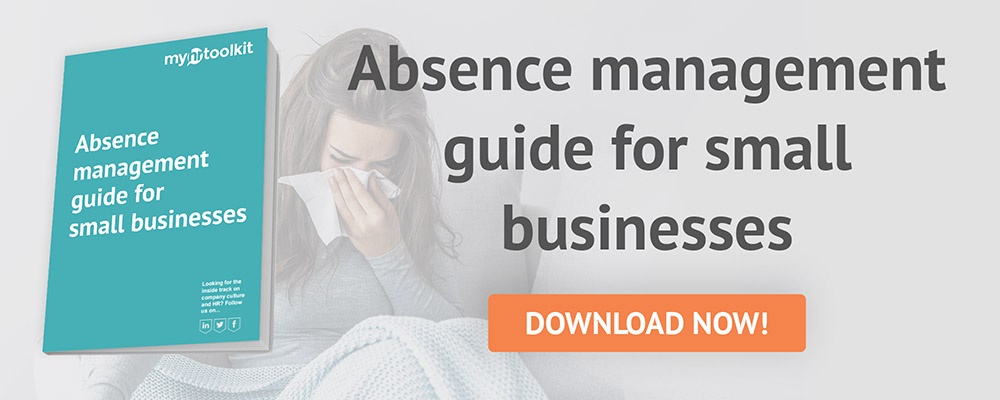How should organisations manage long-term absence? Senior employment lawyer Matthew Ainscough of Bell & Buxton incorporating Ironmonger Curtis explains how to manage long-term absence and what to explore during formal absence meetings.
Dealing with long term sickness absence is not straightforward, and often needs to be dealt with carefully and sensitively. However, employers should always try to deal with it in a proactive way and try not to allow the situation to drift.
What is long-term absence?

Long-term absence is not defined in law, but any absence of more than a few weeks is often classed as long-term absence. Employers should follow any internal long-term absence policies that they have in place. If they do not have such a policy, it’s good to get one in place, as this will make dealing with long-term absence a lot easier.
Employers should be aware that a thorough investigation into the reason for the absence is required and will involve obtaining medical evidence and consulting with the employee. The steps associated with a formal capability (ill health) process are set out below.
Long-term absence: first formal meeting

The first step should be to arrange a first formal meeting to discuss the long-term absence. During the meeting, the following should be discussed:
- The likely date of return and whether the employer can continue to wait for the employee to return
- Arrangements for further medical reviews and further meetings under the procedure
- Any medical reports that have been received
- Whether the employee has a disability
- Whether the employee believes they can return to their previous job, with or without adjustments
- Any alternative options, such as redeployment
- Any arrangements for a return to work
Learn more: Questions to ask your employee in a long-term sickness meeting
If the employee is unable to return to work following this meeting, a second or further meeting would be called for in cases where dismissal is being considered.
It's also very important to record all and any instances of absence, especially for ones that become long-term, and all the steps taken to address absence (such as return to work interviews and any documents relating to absence). This can easily be done within an HR software system with absence management capabilities.
Manage and record absence across the business with myhrtoolkit's cloud-based absence management tools, built for SMEs.
What to explore during a formal meeting

Let’s look at some of the issues that should be explored during a formal meeting in more detail.
1. Cause and likely length of absence
Employers should establish the reason for absence and look out for signs of workplace stress.
An employer should consider whether an individual is likely to return to work in the foreseeable future. If the employee appears unable to work and unlikely to return in the near future, the employer should consider whether they would qualify under any permanent health insurance or ill-health pension.
2. Medical evidence

Employers should consider requesting that the employee attends an examination with an independent specialist doctor or occupational health expert. Once an employer is in possession of a medical report about an employee, they should follow any recommendations, unless there is a very good reason not to do so.
3. Consult with the employee
If the employer has obtained a medical report, the employer should meet the employee to discuss the report (normally at a first formal meeting) and consult with the employee before taking any action to implement any recommendations.
4. Arrangements for the meetings
If it is difficult for the employee to attend their workplace or another of the employer's premises, the employer should consider holding any meeting at the employee's home, at a neutral venue, or remotely by telephone or video conferencing.
If the employee is seriously ill or disabled, employers should consider permitting the individual to be accompanied by a friend or family member.
5. The right to be accompanied

An employee has a statutory right to be accompanied at a "disciplinary meeting" by a trade union representative or a work colleague. A disciplinary hearing is a meeting that could result in any of the following:
- A formal warning being issued
- The taking of some other action by the employer
- The confirmation of a warning or some other action
Meetings merely to investigate or consult would not usually call for accompaniment, but if it is likely that a formal warning or dismissal could result, the employee will have the right to be accompanied.
In any event, it is good practice to provide this right and will help establish procedural fairness in case the employee is dismissed.
6. Medical evidence at the meeting
Medical evidence should be reviewed carefully in consultation with the employee. Employers should try to avoid deciding matters definitively during any consultation meetings and should always take time out to consider the issues. If it looks like the employee might have a disability, the employer should investigate this further, and seek further medical evidence.
If the employee is classed as disabled, the employer should ensure that any decisions take account of any reasonable adjustments that might be made, including to the capability procedure itself (such as allowing more time to prepare for meetings, or allowing the employee to be accompanied by a family member or friend).
7. Consider adjustments and redeployment
In consultation with the employee, the employer should consider whether there are any reasonable adjustments to allow the employee to return to work in some capacity in the foreseeable future. The employee should be asked for their suggestions, but an employer is advised to take medical advice if there is doubt about the prognosis or the scope of any adjustments that could be made.
Employers should also consider if there is any alternative employment that might be more suitable for the employee. Any discussion of redeployment should be approached sensitively, as an employee may see it as a demotion.
Learn more: Reasonable adjustments at work: making your workplace more accessible
8. Dismissal

If it looks as if the employee will not be able to return to work, or the medical evidence is such that it doesn’t appear that the employee is likely to return in the foreseeable future, and all other options have been considered (e.g. redeployment, reasonable adjustments), the employer might feel there is no other option than dismissal. Any dismissal should be with relevant notice.
Learn more: What are the 5 fair reasons for dismissal?
9. Appeal meeting
Employees should be given a timescale within which to notify their employer of any appeal and be asked to state their full grounds of appeal in writing. The employee should also be given the right to be accompanied to the appeal meeting and the employer should confirm the outcome in writing without undue delay.
Read more from the myhrtoolkit blog

Written by Matthew Ainscough
Matthew Ainscough is a Fellow of the Chartered Institute of Legal Executives (FCILEx), specialising in discrimination and employment litigation. He is a Senior Associate and Head of Employment Law at law firm Taylor & Emmet Solicitors. He writes about specialist employment law topics and issues.


 Holiday Planner
Holiday Planner Absence Management
Absence Management Performance Management
Performance Management Staff Management
Staff Management Document Management
Document Management Reporting
Reporting Health and Safety Management
Health and Safety Management Task Management
Task Management Security Centre
Security Centre Self Service
Self Service Mobile
Mobile




